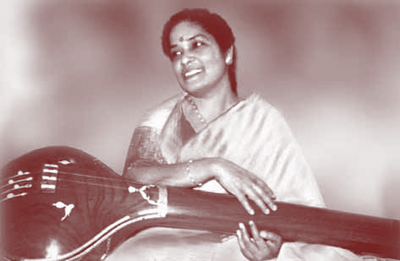അങ്ങനെ ഒരു തീര്ഥാടനകാലം, അര്ജ്ജുനന് ദ്വാരകയ്ക്കടുത്തുള്ള പ്രഭാസതീര്ത്തത്തില് എത്തിച്ചേര്ന്നു. രാത്രിയായി, ബാലരാമന്റെ സഹോദരനായ ഗദനില് നിന്നാണ് അക്കാര്യം അറിഞ്ഞത്. സുഭദ്രയെ തന്റെ ശിഷ്യനും കൌരവരാജാവായ ദുര്യോധനന് വിവാഹം ചെയ്തു കൊടുക്കാന് ബലരാമന് ആലോചിക്കുന്നുണ്ടത്രേ. കുട്ടിക്കാലത്ത് ദ്വാരകയില് വെച്ച് കണ്ടിട്ടുള്ളതാണ്. വര്ഷങ്ങള് കഴിഞ്ഞിരിക്കുന്നു. രാത്രിയുടെ ഏകാന്തതയില് അര്ജ്ജുനന്, കൃഷ്ണനും സുഭദ്രയുമോപ്പം ചിലവിട്ട കുട്ടിക്കാലം ഓര്ത്തു. തമാശകള് ഓര്ത്തു. അറിയാതെ ചിരിച്ചുപോയി.--- സത്യഭാമ കൃഷ്ണനോപ്പം മഥുരയില് കൊട്ടാരമട്ടുപ്പാവില് ഇരിക്കുകയായിരുന്നു.
പെട്ടന്നതാ യാതൊരു കാരണവും കൂടാതെ കൃഷ്ണന് പൊട്ടിച്ചിരിക്കുന്നു. കാരണം അന്വേഷിച്ചു. അര്ജ്ജുനന് തന്നെക്കുറിച്ച് ചിന്തിച്ചു ചിരിച്ച കാര്യം കൃഷ്ണന് പറഞ്ഞു. അര്ജ്ജുനന് കൃഷ്ണനെക്കുറിച്ച് ചിന്തിച്ച നിമിഷം ഭഗവാന് അതറിഞ്ഞു. രാത്രിയില് തന്നെ അര്ജ്ജുനന്റെ അടുത്തെത്തി, കാര്യങ്ങള് അന്വേഷിച്ചു. അവരിരുവരും വളരെനേരം സംസാരിച്ചു. പലകാര്യങ്ങള്. പക്ഷെ, കൃഷ്ണന് ഒരുകാര്യം മനസ്സിലായി, അര്ജ്ജുനന് ഒരേയൊരു വിഷയമേയുള്ളൂ, അത് സുഭദ്രയാണ്. കൃഷ്ണന് കൂടുതല് ഒന്നും പറഞ്ഞില്ല. അര്ജ്ജുനന് സുഭദ്രയെ കാണാന് തന്നെ തീരുമാനിച്ചു. രണ്ടു ദിവസങ്ങള്ക്കു ശേഷം രൈകത പര്വ്വതത്തില് ഒരു ഉത്സവം നടന്നു. അവിടെവെച്ച് അര്ജ്ജുനന് സുഭദ്രയെ കണ്ടു. ഇഷ്ട്ടപ്പെട്ടു. വിവാഹം കഴിക്കാന് തീരുമാനിച്ചു. പക്ഷെ എങ്ങനെ?, ബലരാമനെ എതിര്ക്കുന്നത് എങ്ങനെ. കൃഷ്ണനെത്തന്നെ ശരണം പ്രാപിച്ചു. കൃഷ്ണന് പറഞ്ഞു, ക്ഷത്രിയ കന്യകയ്ക്ക് സ്വയംവരമാണ്, പറഞ്ഞിട്ടുള്ളത്. ഇതുകേട്ടപ്പോള് അര്ജ്ജുനന് ഒരു സംശയം, സ്വയംവരം നടത്തിയാല് സുഭദ്ര തന്നെ വരിക്കുമോ?. പിന്മാറാന് വയ്യ. ഒരു സന്യാസിയുടെ വേഷം ധരിച്ചു യാദവന്മാരേ പാട്ടിലാക്കി, സുഭദ്രയുടെ കൊട്ടാരത്തില് എത്തി, അവിടെ കഴിഞ്ഞു. നിത്യവും വില്ലാളി വീരനും സുന്ദരനുമായ അര്ജ്ജുന ചരിതങ്ങള് സുഭദ്രയെ കേള്പ്പിച്ചു. ഒടുവില് സന്യാസിയുടെ വാക്ചാതുര്യത്തിനു മുന്നില് അവള് അര്ജ്ജുനനെ കാണാനുള്ള തന്റെ ആഗ്രഹം സന്യാസിയോട് പറഞ്ഞു. അര്ജ്ജുനന് സ്വയം വെളിപ്പെടുത്തി. എല്ലാ എതിര്പ്പുകളും അവഗണിച്ച് സുഭദ്രയെ നേടി. കപട സന്യാസി സുഭദ്രയെ തട്ടിക്കൊണ്ടു പോയ വിവരം യാദവര്ക്കിടയില് കോളിളക്കം ഉണ്ടാക്കി. പക്ഷെ കൃഷ്ണന് അവരെയെല്ലാം ബുദ്ധിപൂര്വ്വം സമാശ്വസിപ്പിച്ചു. (മഹാ: ഭാരതം, സംഭവപര്വ്വം 218--228 വരെ അദ്ധ്യായങ്ങള്.ഭാഗവതം ദശമസ്കന്ധം)
അര്ജ്ജുനന് സുഭദ്രയില് അഭിമന്യു ജനിച്ചു. പരാക്രമത്തില് ഭീഷ്മ തുല്ല്യനും, ആയോധനത്തില് അര്ജ്ജുന തുല്ല്യനുമായി ഭാരതം അഭിമന്യുവിനെ വിശേഷിപ്പിക്കുന്നു. അഭിമന്യുവിനെ ഗര്ഭം ധരിച്ചിരിക്കുന്ന സമയം. അര്ജ്ജുനന് സംഭാഷണമദ്ധ്യേ സുഭദ്രയോട് വിവിധ തരത്തിലുള്ള സേനവിന്യാസങ്ങളെക്കുറിച്ച് പറഞ്ഞു. പക്ഷെ പദ്മവ്യൂഹം എന്ന സേനാവിന്യാസത്തെക്കുറിച്ച് പരാമര്ശിച്ചു, പൂര്ത്തിയാക്കാതെ സംഭാഷണം നിര്ത്തി. കാരണം ഗര്ഭാലസ്യത്തില് ആയിരുന്ന സുഭദ്ര അപ്പോഴേക്കും ഉറങ്ങിപ്പോയി. സുഭദ്രയുടെ ഗര്ഭത്തില് ആയിരുന്ന അഭിമന്യു ഇതെല്ലാം കേട്ടിരുന്നു. അങ്ങനെ പദ്മവ്യൂഹം ഭേദിക്കാന് അഭിമന്യു പഠിച്ചു... പക്ഷെ അതിനിന്നും പുറത്തുവരാന് ഉള്ള വിദ്യ പഠിച്ചില്ല. അഭിമന്യുവിന്റെ കുട്ടിക്കാലം അമ്മയോടൊപ്പം ദ്വാരകയില് ആയിരുന്നു. കൃഷ്ണ പുത്രനായ പ്രദ്യുമ്നന് ആണ് വിദ്യാഭ്യാസം നല്കിയത്. കൃതവര്മ്മാവ്, സാത്യകി , ബലരാമന്, കൃഷ്ണന്, അര്ജ്ജുനന് എന്നിവര് ആയോധന വിദ്യ പഠിപ്പിച്ചു. മാത്സ്യ രാജധാനിയായ വിരാടത്തിലെ രാജകുമാരി ഉത്തരയെ 16-ആം വയസ്സില് വിവാഹം ചെയ്തു. അഭിമന്യു മരിക്കുമ്പോള് ഉത്തര, പുത്രനായ പരീക്ഷിത്തിനെ ഗര്ഭം ധരിച്ചിരുന്നു.
കുരുക്ഷേത്ര യുദ്ധത്തില് 1-ആം ദിവസം മുതല് തന്നെ അഭിമന്യു ഉണ്ടായിരുന്നു. യുദ്ധം 12-ആം ദിവസം ആയപ്പോഴേക്കും കൌരവ പക്ഷത്തു, വളരെയധികം നാശം സംഭവിച്ചു. 10-ആം ദിവസം കൌരവ സേനാധിപതി ഭീഷ്മര് നിലംപതിച്ചു. ശേഷം ദ്രോണര് നായകനായി. ഇരുപക്ഷത്തും ഒരു വിജയം അനിവാര്യം ആയിരുന്നു. 13- ആം ദിനം ദ്രോണരുടെ നേതൃത്വത്തില് യുധിഷ്ട്ടിരനതിരെ രൂക്ഷമായ യുദ്ധം നടന്നു. പരാജയഭീതിപൂണ്ട ദുര്യോധനനെ സംരക്ഷിക്കാന് ദ്രോണര് സേനയുടെ മധ്യത്തില് പദ്മവ്യൂഹം ചമച്ചു. ഒപ്പം ദുര്യോധനന്റെ നിര്ദ്ദേശപ്രകാരം യുധിഷ്ട്ടിരനെ ജീവനോടെ പിടിക്കുവാനായി മുന്നേറ്റ നിരയില് ചക്രവ്യൂഹവും ചമച്ചു. യുധിഷ്ട്ടിരന് ചക്രവ്യൂഹത്തില്പ്പെടാതെ അര്ജ്ജുനനും പ്രദ്യുംനനും പൊരുതി. പദ്മവ്യൂഹത്തിന്റെ സംരക്ഷണത്തില് ആയിരുന്ന ദുര്യോധനനെതിരെ പ്രത്യാക്രമണം ചെയ്യാന് കഴിയാതെ പാണ്ഡവസേന കുഴങ്ങി. കൃഷ്ണനും അര്ജ്ജുനനും പ്രദ്യുംനനും മാത്രമായിരുന്നു പാണ്ഡവപക്ഷത്തു പദ്മവ്യൂഹം തകര്ക്കാന് അറിയാമായിരുന്നത്. പക്ഷെ അവര് ചക്രവ്യൂഹതിനെതിരെ പൊരുതുകയായിരുന്നു. അങ്ങനെ ആ ചുമതല അഭിമന്യു ഏറ്റെടുത്തു. അഭിമന്യു പദ്മവ്യൂഹം ഭേദിച്ചു. പക്ഷെ പാണ്ഡവസേനയ്ക്ക് ഒപ്പമെത്താന് കഴിഞ്ഞില്ല. ദ്രോണര്, കര്ണ്ണന്, കൃപര്, ആശ്വഥാമാവ്, ദുര്യോധനന്, ജയദ്രഥന്, ശകുനി, എന്നിവര് അഭിമന്യുവിനെ വളഞ്ഞു. അങ്ങനെ 7- പേരോട് ഒറ്റയ്ക്ക് പോരുതിതളര്ന്ന അഭിമന്യുവിനെ ദുശ്ശാസനപുത്രനായ ദുര്മാനസന് ഗദയാല് തലയ്ക്കടിച്ചു വീഴ്ത്തി. പക്ഷെ മരിക്കുന്നതിനു മുന്പ് ദുര്മാനസനെയും അഭിമന്യു വധിച്ചു. അങ്ങനെ മഹാഭാരത യുദ്ധം 13-ആം ദിവസം, 16-ആം വയസ്സില് അഭിമന്യു വധിക്കപ്പെട്ടു. അഭിമന്യുവിന്റെ പുത്രനായ പരീക്ഷിത്ത് ആണ്, ധര്മ്മപുത്രര്ക്ക് ശേഷം രാജാവായത്.
ഇത്രയും ഇതിഹാസം... ഇനി പുരാണം, ചന്ദ്ര പുത്രനായ വര്ച്ചസ്സാണ് ദ്വാപര യുഗത്തില് അഭിമന്യുവായി ജനിച്ചത്. മഹാദേവ ശാപഗ്രസ്ഥനായ ശനി ആയിരുന്നു ദുര്യോധനന് (ആശ്രമവാസിക പര്വ്വം-1-ആം അദ്ധ്യായം). ശനി ദേവന്റെ ശാപമോചനമാണ് കൃഷ്ണന്റെ ദുര്യോധനവധം. അതിനു ദേവന്മാര് പാണ്ഡവരായി ജന്മമെടുത്തു, ഭഗവാന്റെ സഹായികള് ആയി. തന്റെ പുത്രനായ വര്ച്ചസ്സിനെ നല്കുമ്പോള് 16- വര്ഷത്തിനു ശേഷം, തിരികെ വേണം എന്ന് ചന്ദ്രന് ആവശ്യപ്പെട്ടിരുന്നു. അങ്ങനെ അഭിമന്യു 16-ആം വയസ്സില് ഭൂമി വിട്ടുപോയി.(മഹാ:സംഭവപര്വ്വം 67-ആം അദ്ധ്യായം). .








.jpg)



